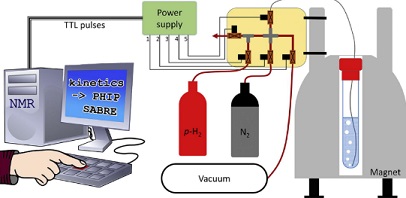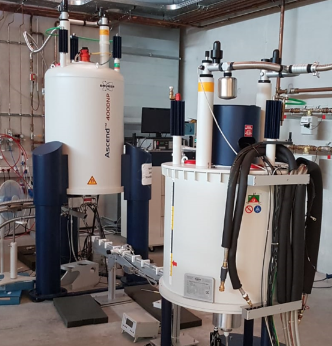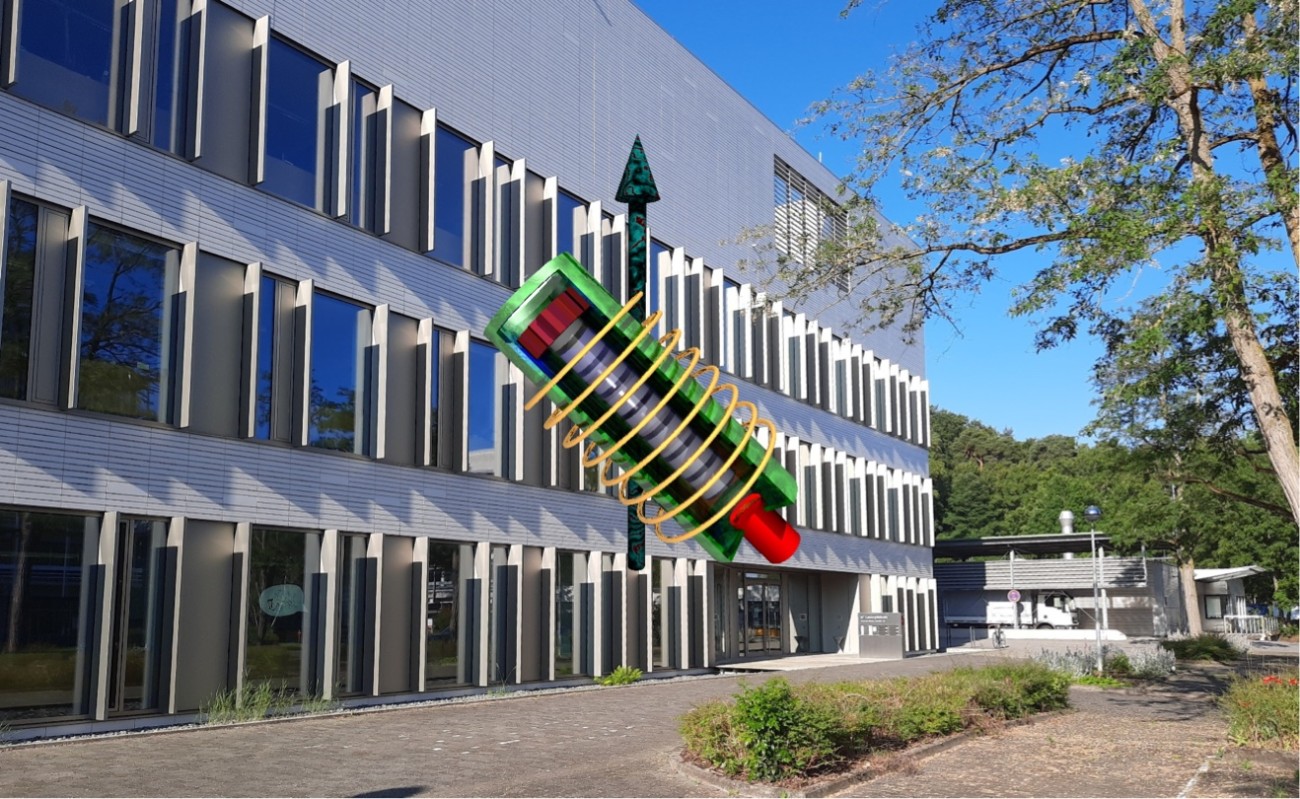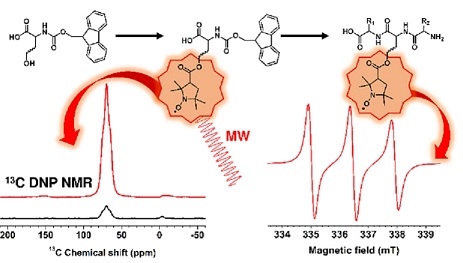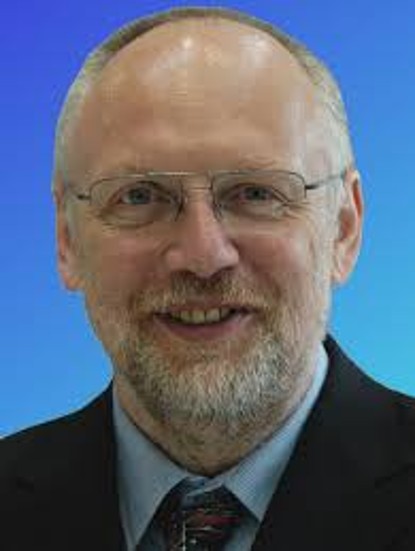For these investigations the group has a fully equipped solid-state NMR and hyperpolarization NMR laboratory with five state of the art high-field NMR spectrometers, a wet-lab for the synthesis of model compounds and the infrastructure to work under air-sensitive or inert conditions.
These techniques are applied to a variety of systems, ranging from functional materials such as catalytically active metal-nanoparticles over technical catalysts to immobilized homogeneous catalysts and electric functional materials (dielectrics, relaxor ferroelectrics, battery materials) over biomaterials such as enzymes, enzyme models and hybrid materials to confined systems, liquids and gases.
Questions
- Structure and dynamics of guest molecules on surfaces.
- Structural characterization of disordered systems.
- Structure, dynamics and micro-phase behavior of confined systems.
- Understanding spin dynamics in solids and solution.
- Reaction kinetics in the solid state.
- Methodological and technical development of solid state NMR spectroscopy and hyperpolarization NMR for the study of disordered systems.
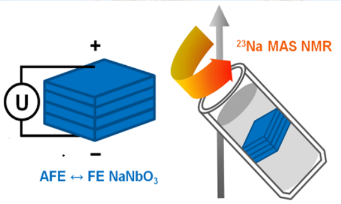
Methods
- Multi-nuclear variable temperature solid state NMR on powders and single crystals.
- Multi-nuclear 1D and 2D high resolution solid state NMR techniques (MAS, dipolar recoupling, MQMAS, HETCOR,…).
- Synthesis and characterization of model systems for enzymatic or catalytic reactions, including inert synthesis and selective isotope labelling.
- Numerical simulations and analytical calculations of spin dynamics and reaction kinetics.
- Hyperpolarization enhanced NMR techniques (DNP, PHIP, SABRE).
